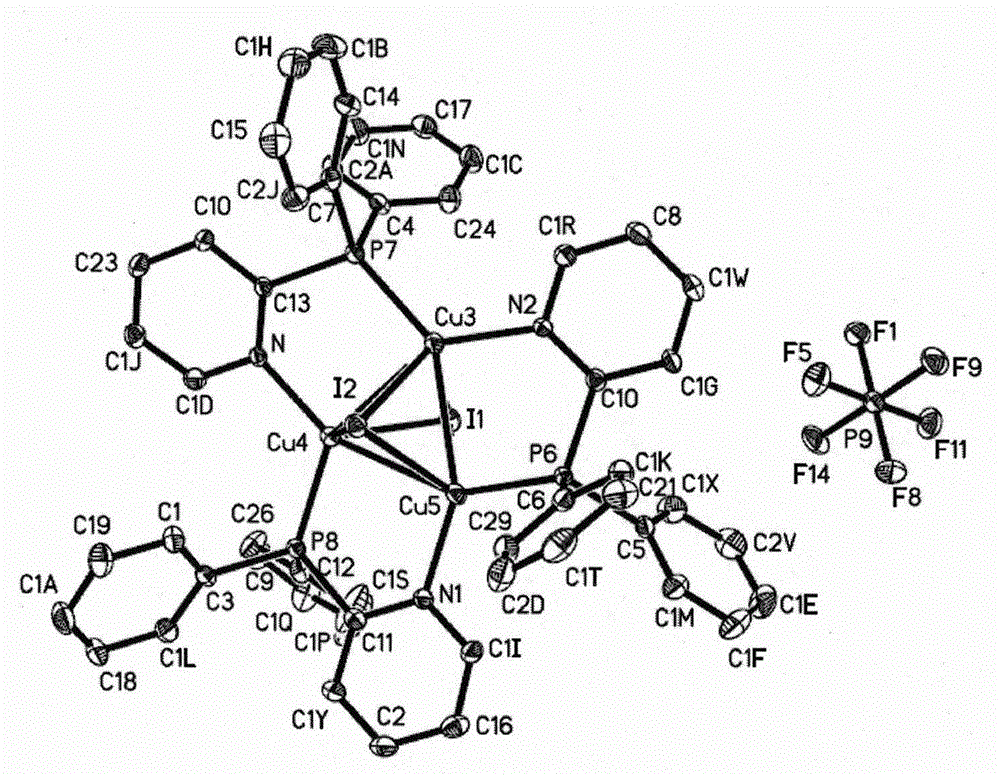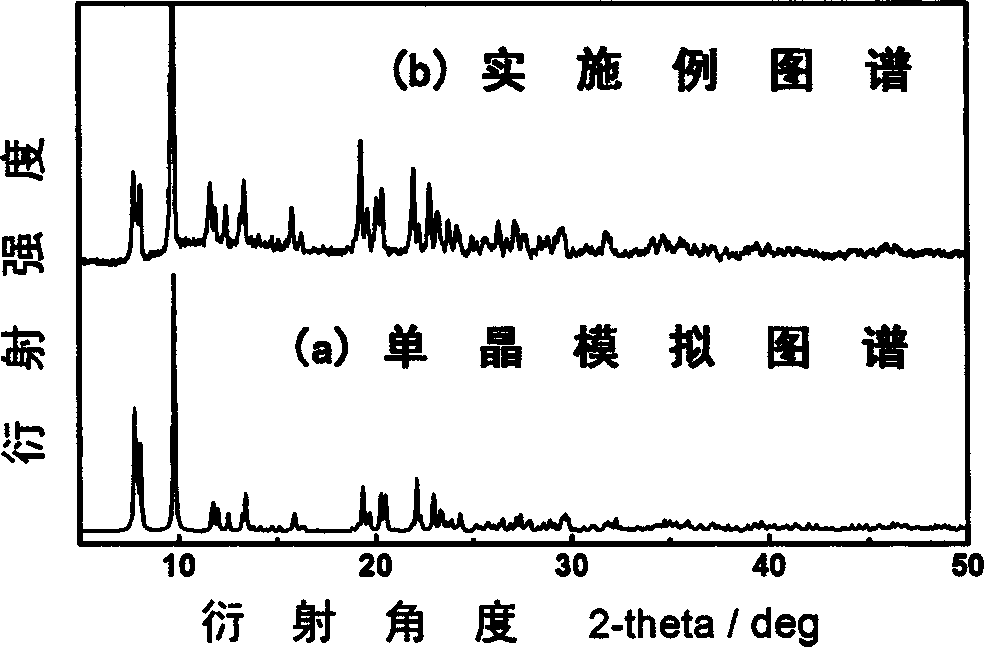Cu3I2 cationic cuprous cluster compound green phosphor material
A green phosphorescent, cationic technology, applied in the field of organic electroluminescent materials and luminescent materials, can solve the problems of high cost, the luminous intensity cannot meet the application requirements, affecting the popularization and application of OLED and market performance, etc. Structural Distortion Dependent Nonradiative Attenuation Process, Effect of Good Phosphorescence Emission Properties
- Summary
- Abstract
- Description
- Claims
- Application Information
AI Technical Summary
Problems solved by technology
Method used
Image
Examples
Embodiment 1
[0030] A large number of phosphorescent cluster materials [(Cu 3 I 2 )(DPPY) 3 ]PF 6 Microcrystalline sample preparation: Weigh 0.4mmol (76mg) CuI and dissolve it in 20mL acetonitrile solution to obtain a clear solution A; then weigh 0.6mmol (158mg) diphenyl-2-pyridylphosphine (DPPY) and dissolve it in 10mL di In methyl chloride, a colorless clear solution B was obtained, and solution B was added dropwise to solution A, and after stirring and reacting completely, it became yellow clear solution C; then weighed 0.2 mmol (75 mg) [Cu(CH 3 EN) 4 ]PF 6 Dissolve in 10mL of dichloromethane to obtain a colorless transparent solution D; then slowly add D to the above mixed solution C, stir at room temperature to make it fully react, and finally filter the obtained yellow solution, and rotary evaporate to remove all The solvent was vacuum-dried to obtain a yellow crystal powder as the product, and the yield was 95% (calculated as Cu).
Embodiment 2
[0032] Synthesis of phosphorescent cluster materials [(Cu 3 I 2 )(DPPY) 3 ]PF 6 single crystal: Weigh 50 mg of the yellow crystal product powder obtained in Example 1, re-dissolve it completely with 10 mL of dichloromethane and filter, cover the filtrate with isopropanol to promote product crystallization, and precipitate a large number of yellow flaky crystals after standing for several days. A yellow crystal with a size of 0.48mm×0.23mm×0.17mm was selected for X-ray single crystal structure test. The molecular structure of the compound is shown in the attached figure 1 , and its unit cell packing structure is shown in the attached figure 2 .
[0033] For phosphorescent cluster materials [(Cu 3 I 2 )(DPPY) 3 ]PF 6 A series of performance tests were carried out on pure phase crystal samples. The material crystal of the present invention has been tested for steady state fluorescence, and the results show that the material can emit strong green light under the action ...
PUM
 Login to View More
Login to View More Abstract
Description
Claims
Application Information
 Login to View More
Login to View More - R&D
- Intellectual Property
- Life Sciences
- Materials
- Tech Scout
- Unparalleled Data Quality
- Higher Quality Content
- 60% Fewer Hallucinations
Browse by: Latest US Patents, China's latest patents, Technical Efficacy Thesaurus, Application Domain, Technology Topic, Popular Technical Reports.
© 2025 PatSnap. All rights reserved.Legal|Privacy policy|Modern Slavery Act Transparency Statement|Sitemap|About US| Contact US: help@patsnap.com



